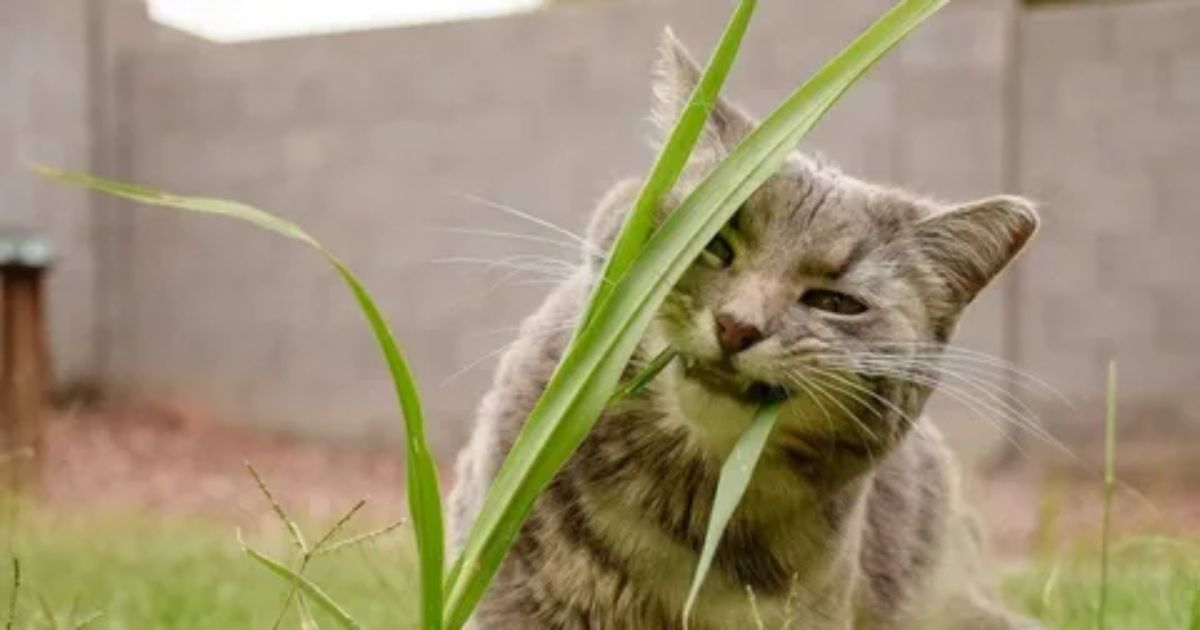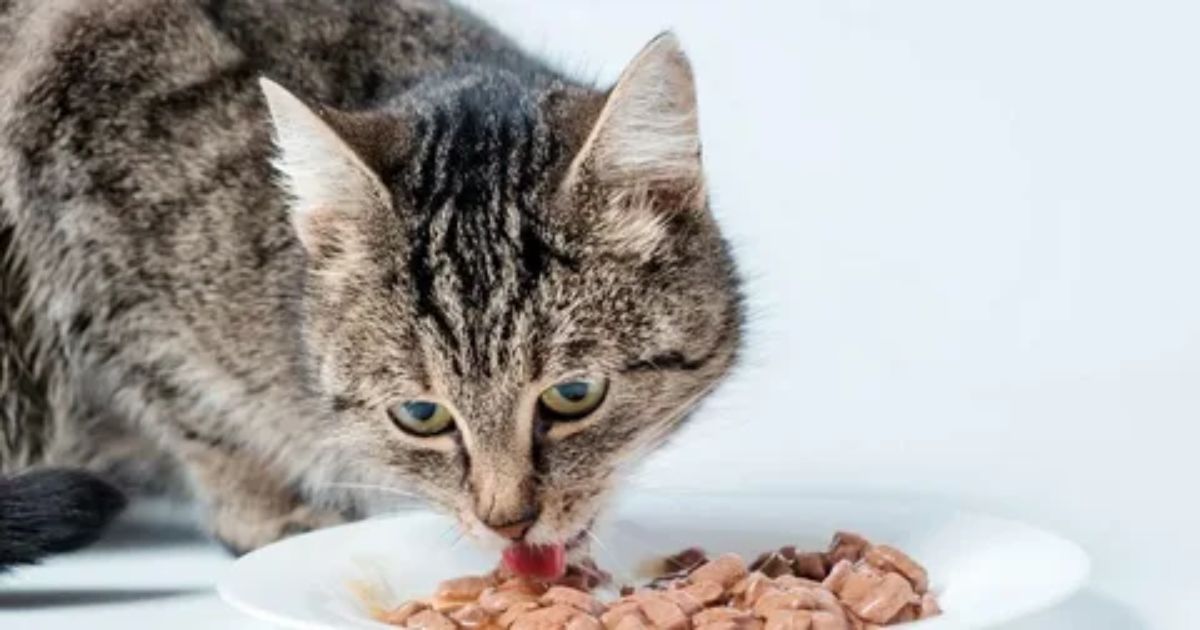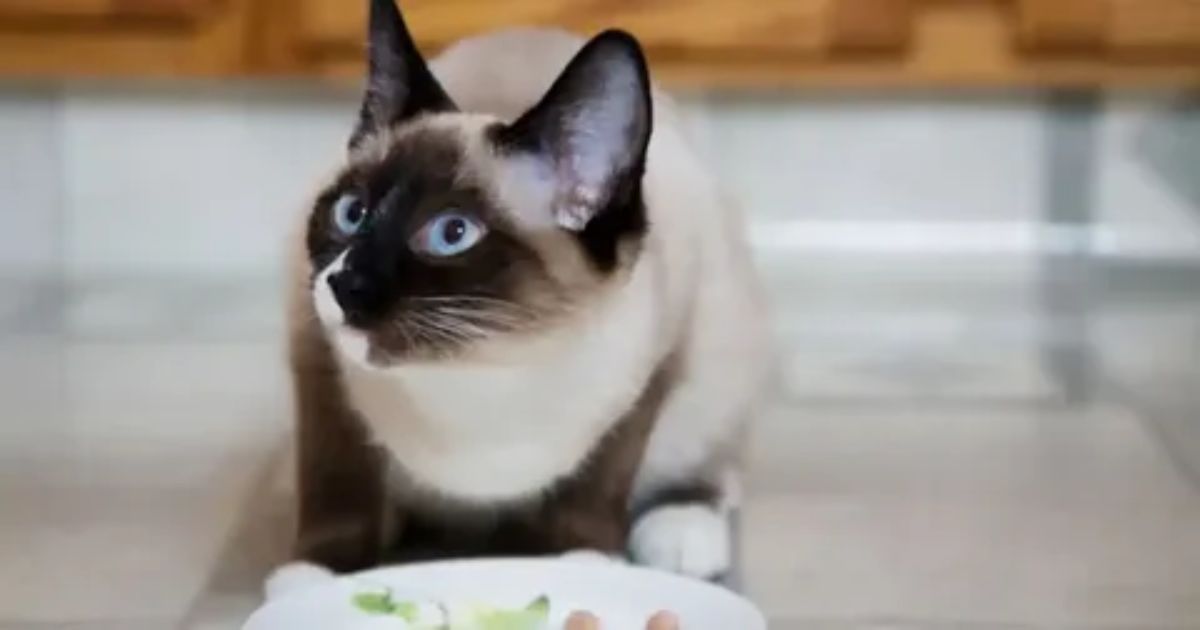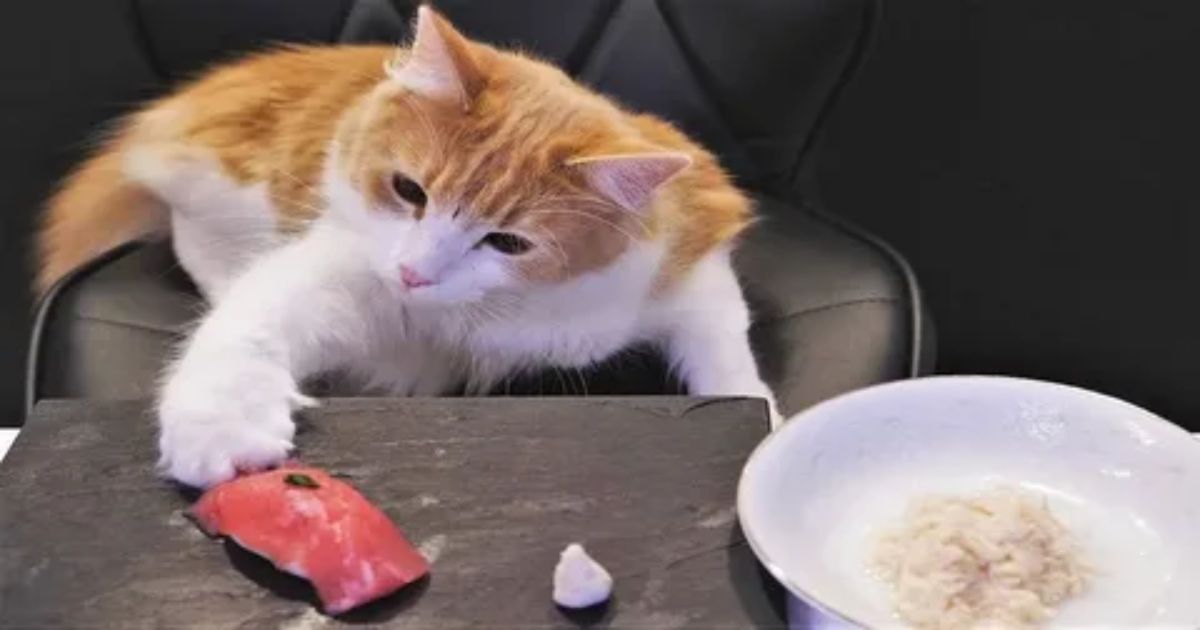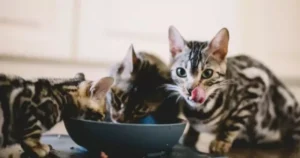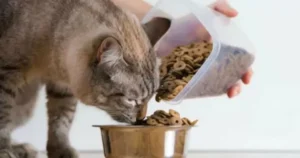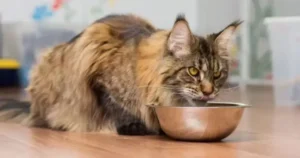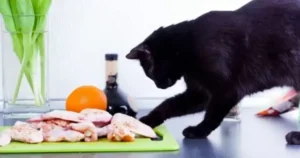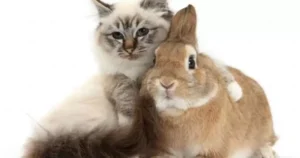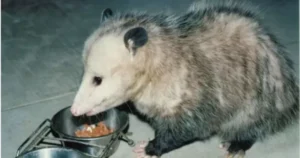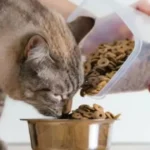Many cat owners see their feline friends trying to “bury” or cover their food bowls after eating. This natural behavior stems from cats’ ancestral history and remains common despite domestication. This article explores the origins of food burying in cats and offers tips for managing this quirky feline habit.
The Instinct to Bury Food
Cats try to bury their food for two key reasons:
– Cats have retained their wild instinct to hide food to prevent attracting predators or alerting prey.
– Burying food also serves to “cache” it for later consumption if fresh food is scarce. This impulse persists even when cats have abundant food.
Early Domestic Cats Relied on Hunting
Modern house cats descended from wild cats that had to hunt to survive. After killing prey, felines would try to conceal it to:
– Avoid attracting competing predators who might steal the fresh kill
– Prevent prey animals from detecting evidence of cats’ presence, which would make future hunting harder
Though pet cats no longer need to hunt, the instinct of burying food remains ingrained.
Signs Your Cat Is Burying Food
Cats demonstrate “caching” or burying behaviors like:
– Using front paws to scrape the floor/walls around the food bowl
– Nudging bowl with nose or head to push against a wall
– Scratching litter around dry food chunks or treats
– Attempting to cover canned wet food with invisible “soil”
Scraping motions to hide food often continue for several minutes after your cat finishes eating. This instinct is triggered each time the cat eats.
Why Do Pet Cats Exhibit Food Burial Behaviors?
Though household cats don’t need to store food for later, the instinctive habit persists due to:
Lack of Domestication
Cats are not fully domesticated animals. They have lived alongside humans for only around 4,000 years, unlike dogs that have over 14,000 years of selective breeding. With less human intervention influencing behaviors, many cats’ wild impulses remain intact.
Ingrained Survival Behaviors
Burying food would have enhanced wild cats’ odds of thriving and passing down behaviors. Thus, cats that retained these instincts were more successful. The common nature of food caching in domestic cats indicates that it still provides some advantages.
Scent Masking
Covering up strong food smells may reduce the chances of attracting predators to pet cats’ homes or yards. Indoor-only cats likely don’t need scent camouflage but follow the habit regardless.
Anxieties or Stressors
Inadequate hiding spaces, introducing new pets, or dirty litter boxes can stress some cats. The burying impulse may persist or increase to soothe cats during environmental changes. If your cat starts trying to bury things like “Can Cats Eat Baby Food?” it could be a sign they are feeling stressed by some change in their environment.
What Does Food Burial Mean For Your Cat?
Don’t worry if your cat tries to cover up his food. This usually signifies:
– Your cat feels safe and comfortable eating in place
– Your home meets the cat’s needs for shelter and routine
– Your cat is content and following ingrained caching routines
Rather than problematic, most experts consider burial behaviors as endearing cat quirks. As long as your cat is eating well, there is no cause for concern.
Tips for Managing Mess From Burial Attempts
| Tip Number | Tip Description |
| 1 | Choose a designated burial area. |
| 2 | Use a small shovel or trowel for controlled digging. |
| 3 | Lay down a plastic sheet to contain dirt and debris. |
| 4 | Keep a brush or broom nearby for easy cleanup. |
| 5 | Wear old clothes to avoid staining with soil. |
| 6 | Have a water source for handwashing close by. |
| 7 | Dispose of waste responsibly in designated bins. |
| 8 | Cover the burial site with a temporary barrier. |
| 9 | Consider using biodegradable materials for burial. |
| 10 | Be mindful of local regulations and guidelines. |
Cats’ efforts to disguise food can make mealtimes messier. Consider these tips to limit issues:
– Feed wet food on a mat you can easily clean
– Choose ceramic, stainless steel, or plastic bowls that food won’t stick to
– Avoid bowls with steep sides that hold spilled crumbs
– Place dry food on a plate or cookie sheet to catch kicked pieces
– Put the food bowl inside a cardboard box to contain spills
By making the area around your cat’s dish easy to wipe clean, you can quickly tidy up any traces of their food-hiding activity. Be patient and remember this is normal cat behavior.
When To Worry About Food Burial
Most cats routinely try to cover up meals. However, increased burying behavior can indicate:
– Stress from adding new pets, construction, or house guests
– An underlying medical issue like dental disease causing mouth pain
– Anxiety from inadequate “hideouts” and perches
– Litter box problems making your cat unwilling to eat nearby
– Neurological conditions in senior cats impairing responses
If your cat wasn’t previously diligent about “Why Does My Cat Try To Bury Her Food?” but the habit now seems excessive, contact your veterinarian. Sudden changes in established behaviors warrant attention to identify the underlying cause.
The Takeaway on Cats Burying Food
While cats hiding their food bowls looks strange, it’s purposeful instinctive behavior. When transmitted down from their wild ancestors, this habit enhanced feline survival odds by hiding signs that could attract threats. Indoor cats retain innate food burial impulses without needing practical benefits. As an endearing cat quirk, most owners don’t mind a little spilled food and just tidy up after their feline companions. Pay attention if burying habits change suddenly as that clue could indicate health issues requiring veterinary attention. Overall, remember that this common cat conduct links back to their wild past and accepts it as part of coexisting with these self-reliant pets.
Conclusion
Cats try to bury their food because of instincts from their wild ancestors. Wild cats needed to hide food remains to avoid attracting other animals. Burying food lets wild cats keep kill sites secret so they can hunt again. Even indoor pets dig and scratch around their meals. This is because food burial behaviors are innate in all cats.
Domestic cats don’t have to hide or save food. But their instincts drive them to bury bowls anyway. Scraping and pushing food to conceal it is a natural behavior you can’t train away. When cats bury meals by instinct, it shows their wild origins. Pet cats might not need to, but hiding food makes them feel safe. As kitty owners, we accept this quirk and all its spilled crumbs.
